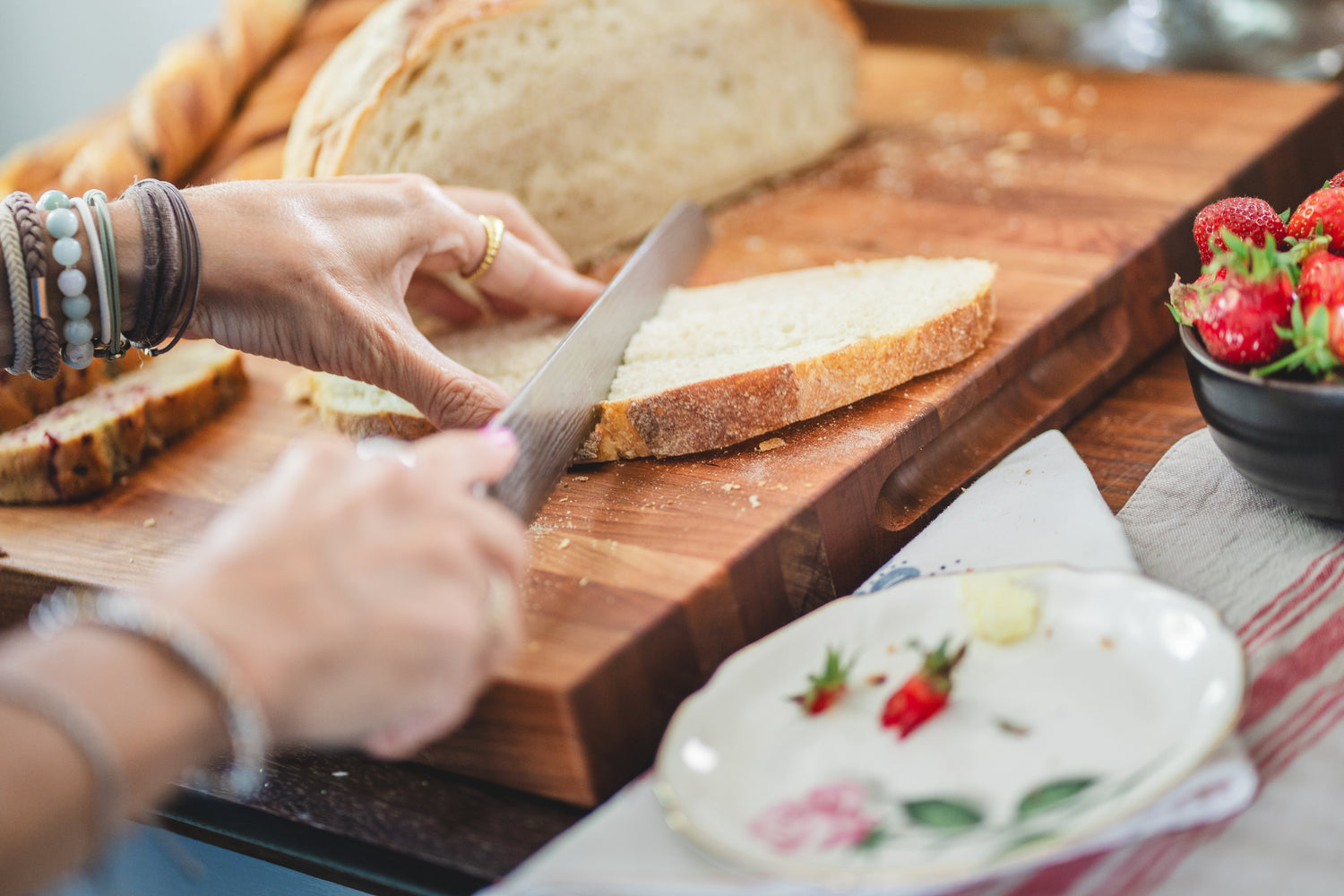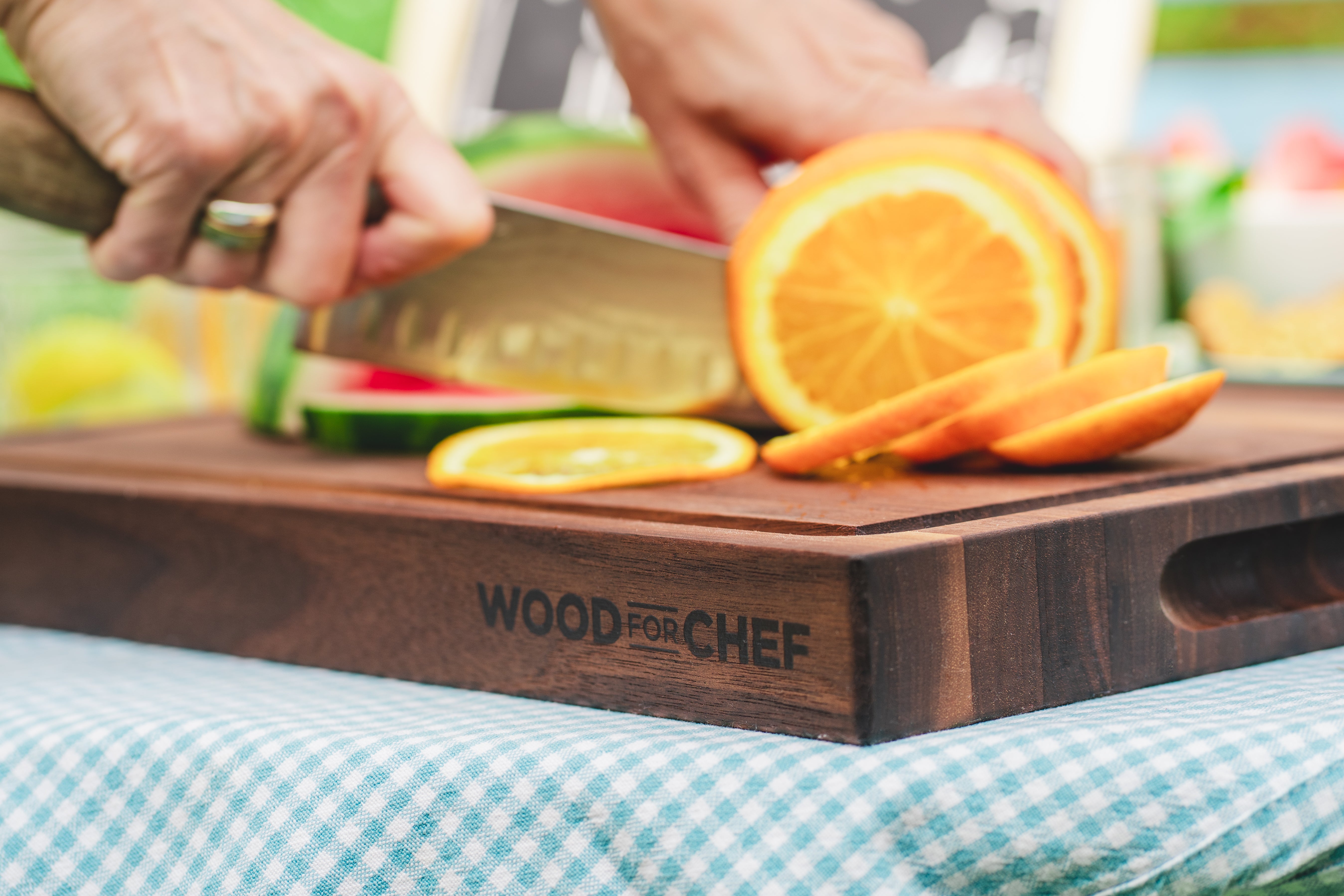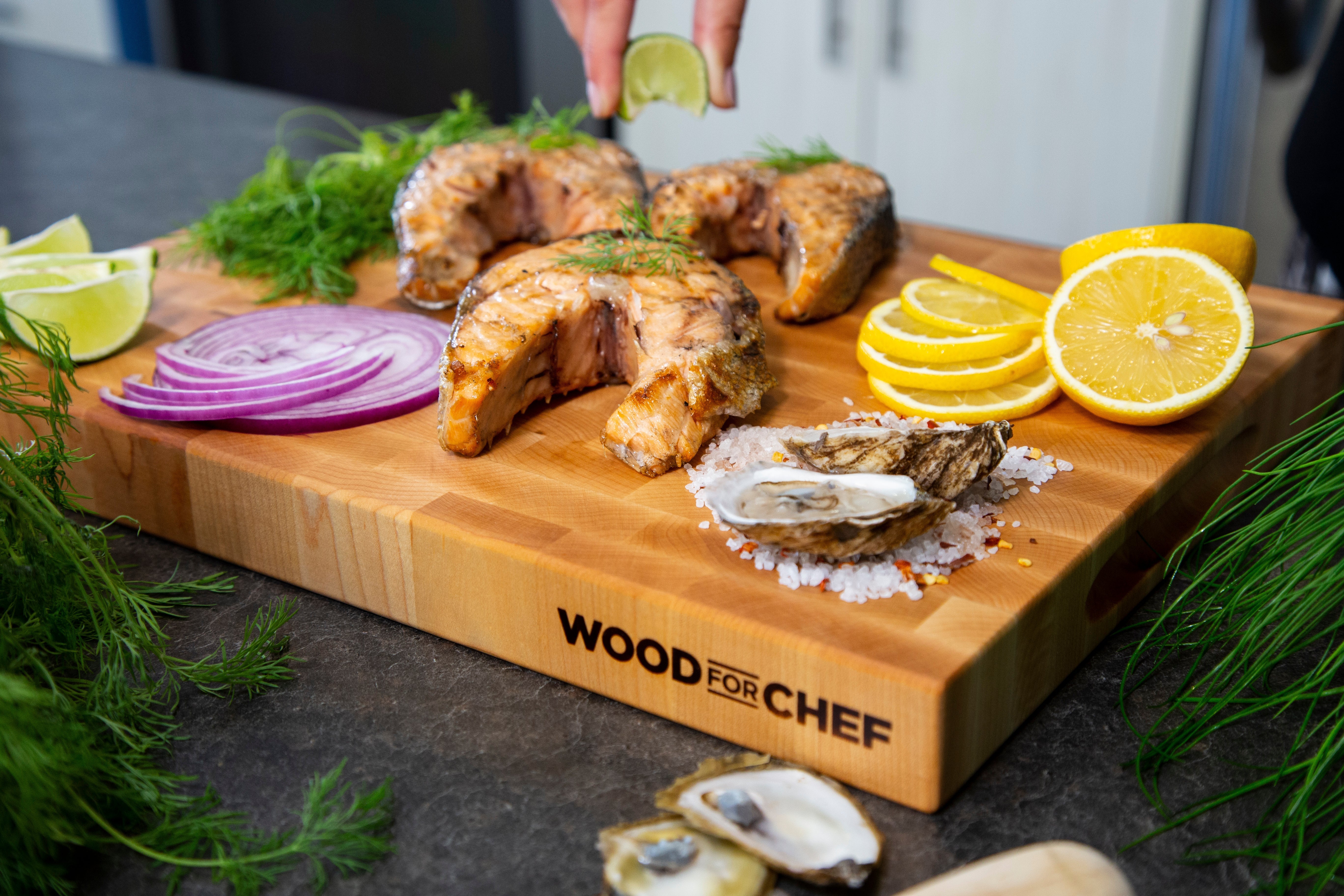Cutting boards: should you choose wood or plastic?
When it comes to choosing the right cutting board (or chopping board), the age-old debate between wood and plastic continues. Whether you’re a home cook or a seasoned chef, your choice can impact hygiene, knife care, and even the aesthetics of your kitchen. So which is better: wooden or plastic cutting boards? Let’s break it down.
Pros of wood cutting boards
Wood cutting boards aren’t just a traditional choice, they’re a high-performing, sustainable kitchen essential. Here’s why:
1.Gentle on your knives
Professional chefs understand a fundamental truth: your knives are only as good as the surface you cut on. Wood is generally softer than plastic. That means it’s gentler on your knife blades, reducing the risk of dulling them prematurely. If you want your knives to stay sharp longer, a wood cutting board is the better option.
Still not convinced? Stick around, we’re about to nerd out on blade physics in a way your knives will thank you for.
When a knife contacts wood, the fibers compress slightly and then spring back, creating what knife experts call "edge retention." The wood essentially cradles the blade during each cut, preventing the microscopic chips and dulling that occur when knives strike harder materials. Professional kitchens rely on this principle to maintain their expensive knife collections without constant resharpening.
2.Naturally antimicrobial
Unlike plastic, which can trap bacteria in scratches, wood has natural antimicrobial properties. Research conducted by food scientists at UC Davis found that bacteria placed on wooden surfaces die within minutes, while the same bacteria continue to multiply on plastic surfaces even after thorough cleaning.
This phenomenon occurs because wood contains natural compounds called extractives—tannins, phenols, and other organic molecules that actively inhibit bacterial growth. Different wood species offer varying levels of these protective compounds, with hardwoods like maple, cherry, and walnut providing the strongest antibacterial effects. This, combined with proper drying, creates a self-sanitizing effect that plastic boards cannot replicate.
3.Durable and eco-friendly
A well-cared-for wooden board can last for years. Wood is a renewable resource that, when sourced responsibly through FSC-certified forestry practices—as WoodForChef does—supports sustainable forest management. At the end of its exceptionally long lifespan, wood biodegrades naturally, without contributing to landfill waste.
4.Aesthetic appeal
Beyond pure functionality, wood cutting boards excel as serving pieces. The natural beauty of wood grain transforms a utilitarian tool into an attractive presentation surface for charcuterie, cheese, bread, or appetizers. This dual-purpose capability maximizes kitchen utility while reducing the need for separate serving boards.
We personally think that different wood species offer distinct visual appeals: maple's clean, light appearance complements modern kitchens, while walnut's rich chocolate tones add warmth to traditional settings. Cherry develops a beautiful amber patina over time, creating a personalized piece that reflects years of culinary adventures.

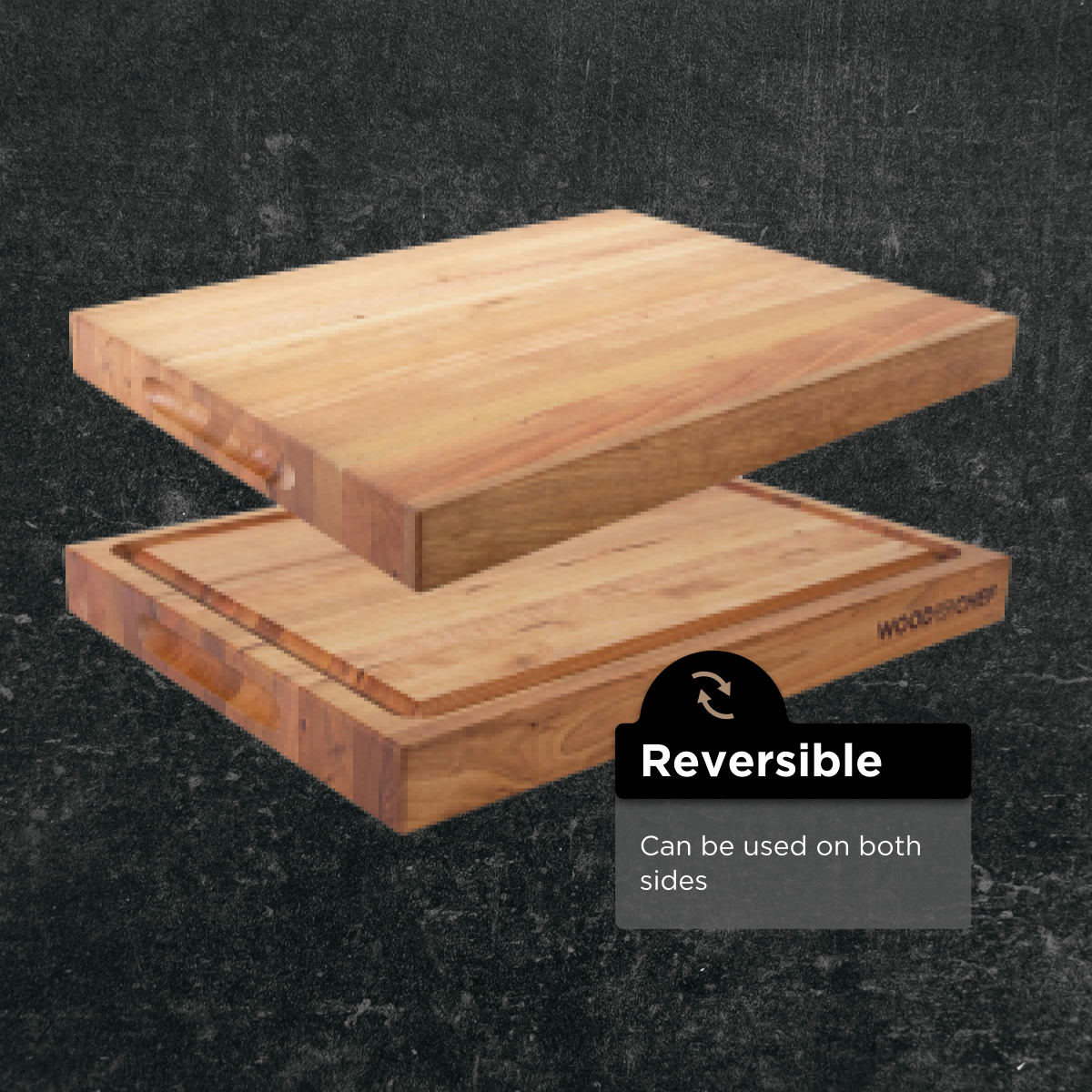
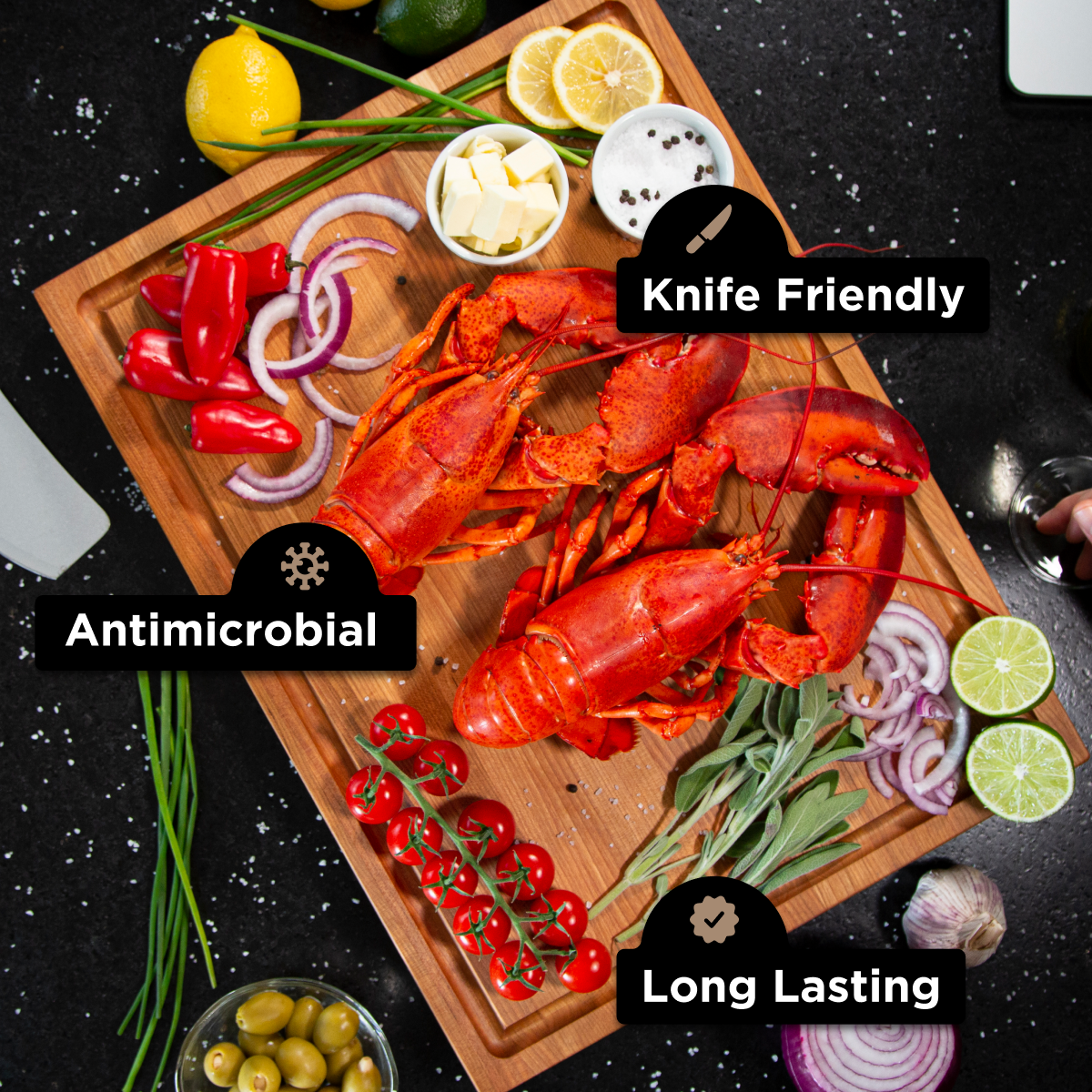
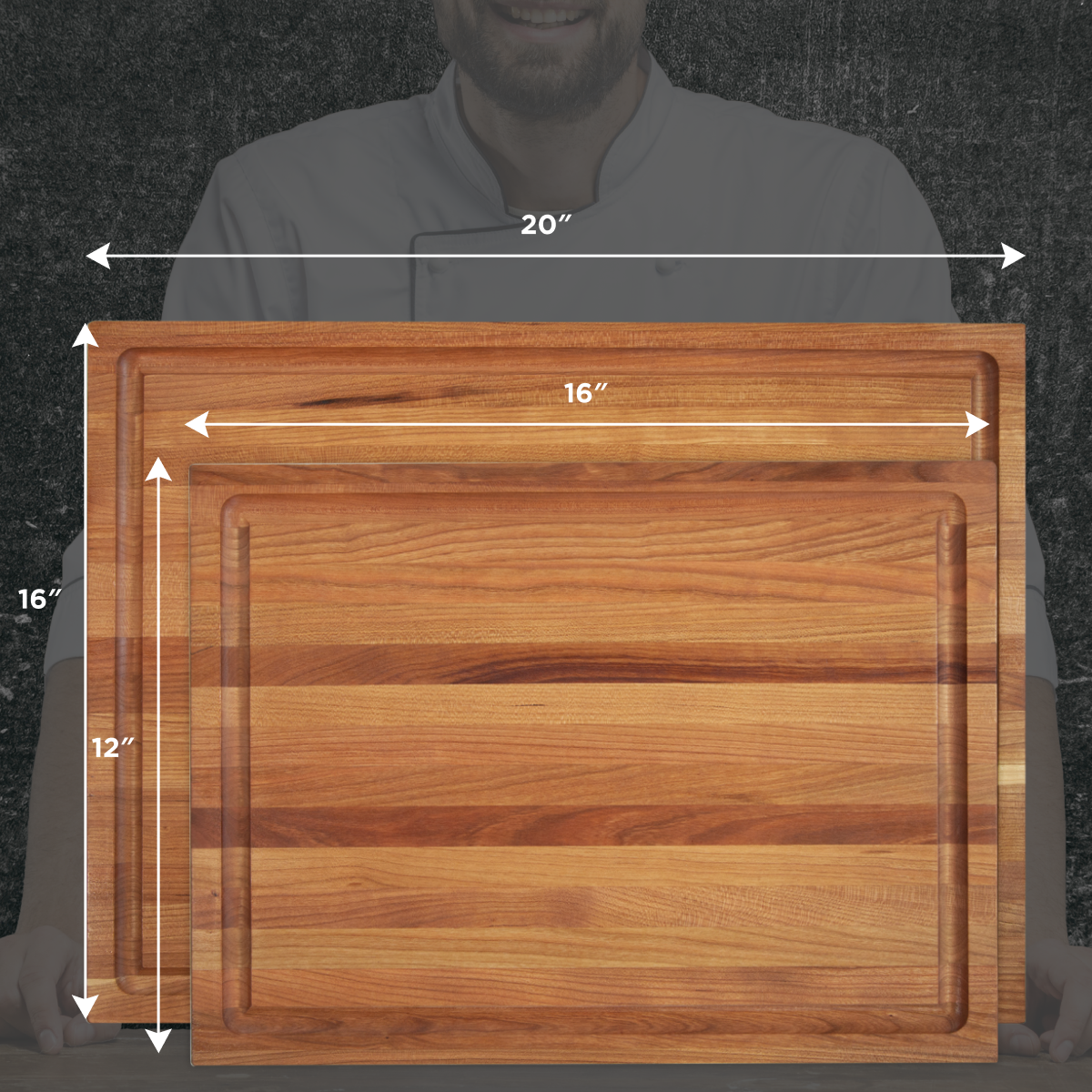
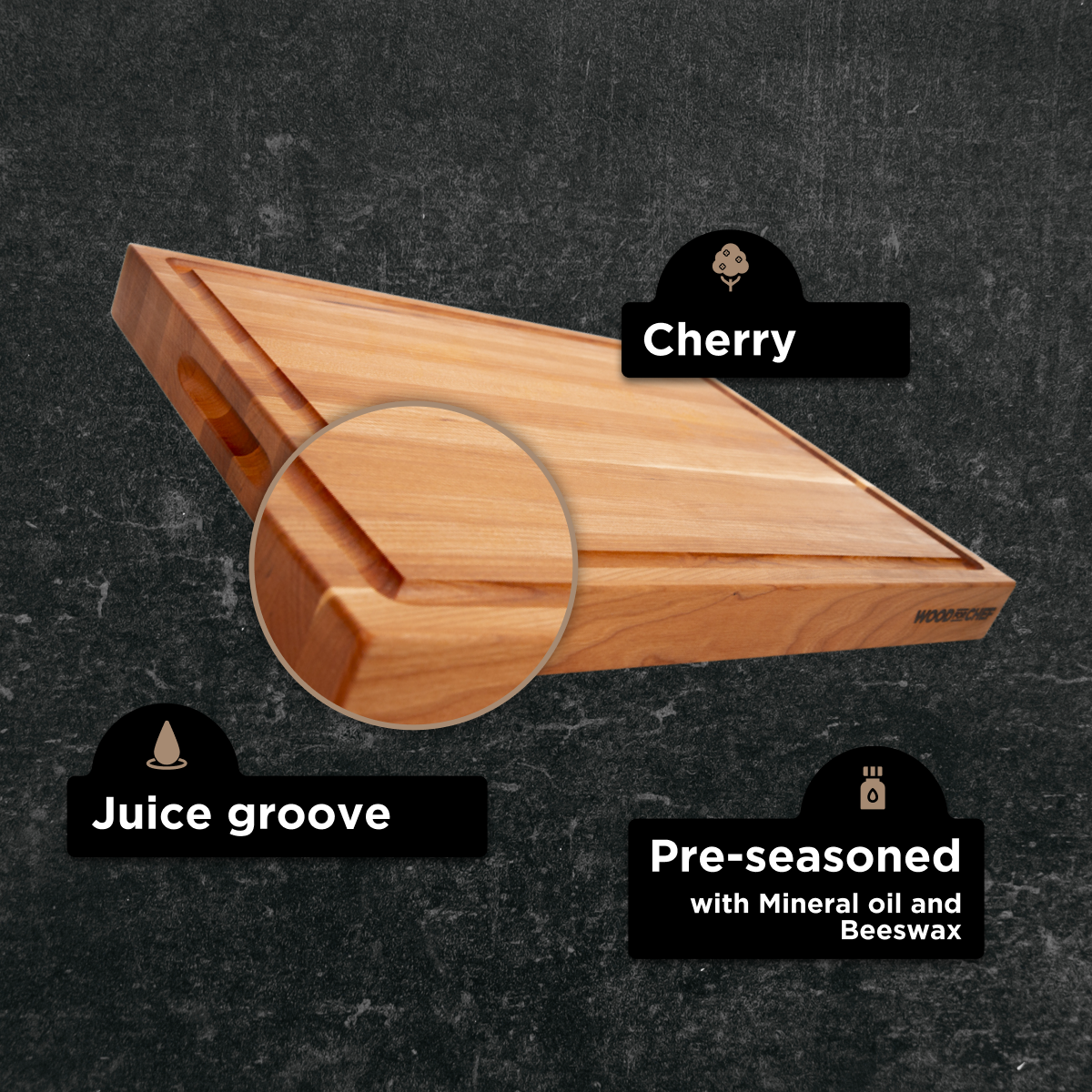

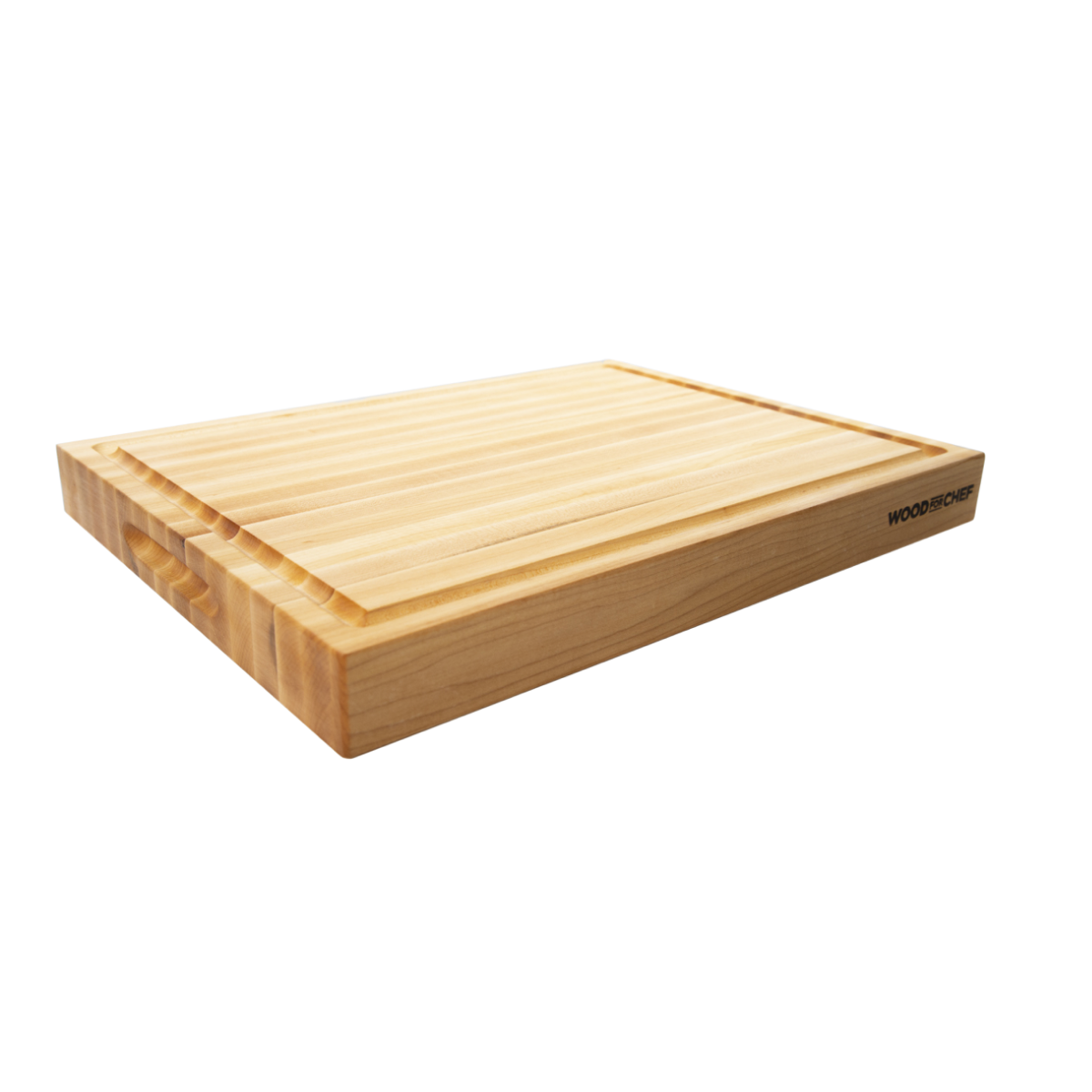
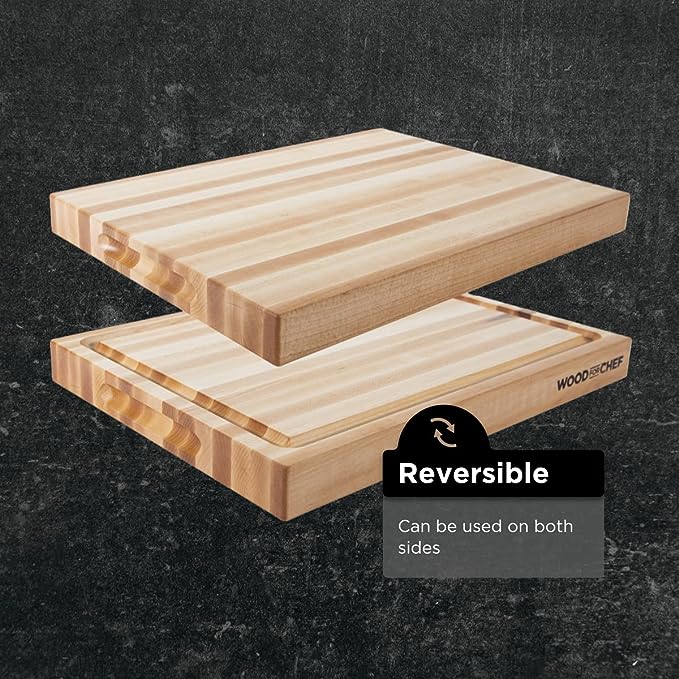
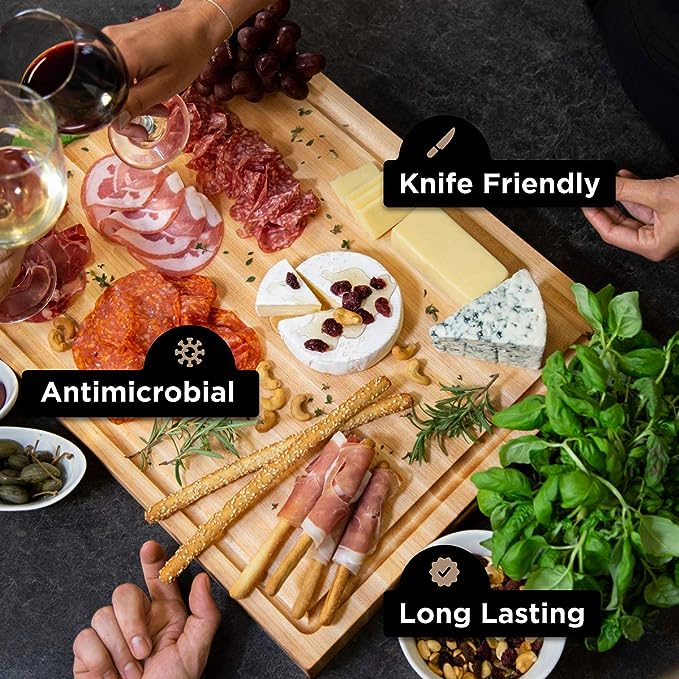
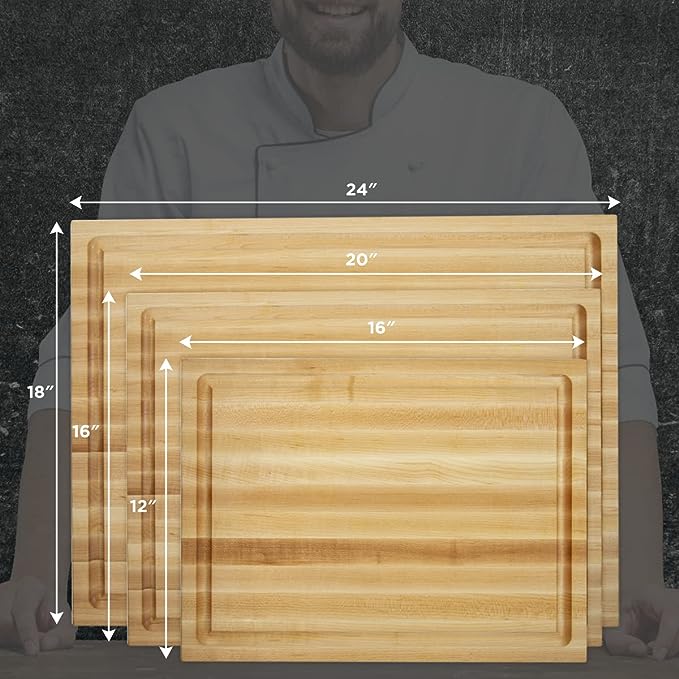

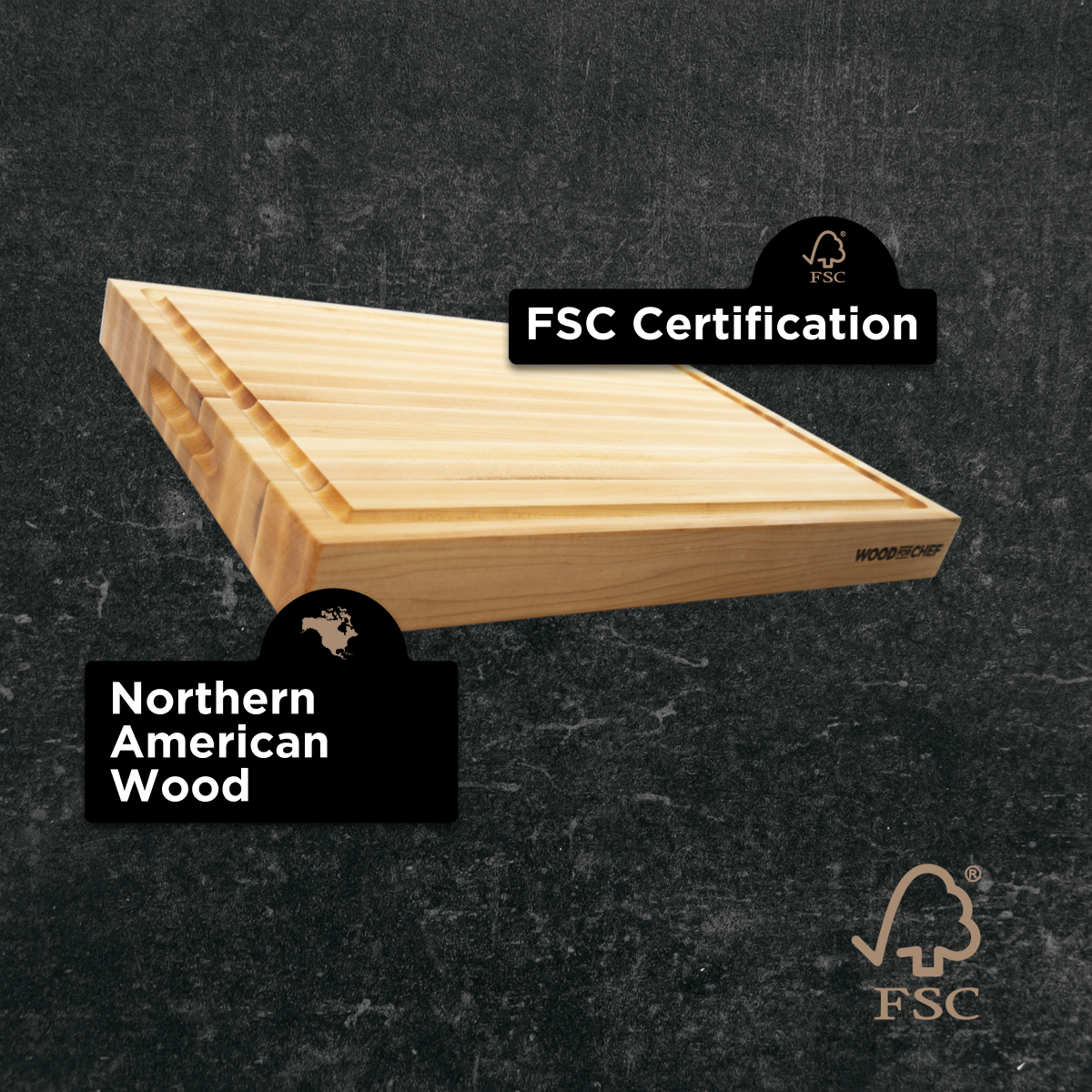

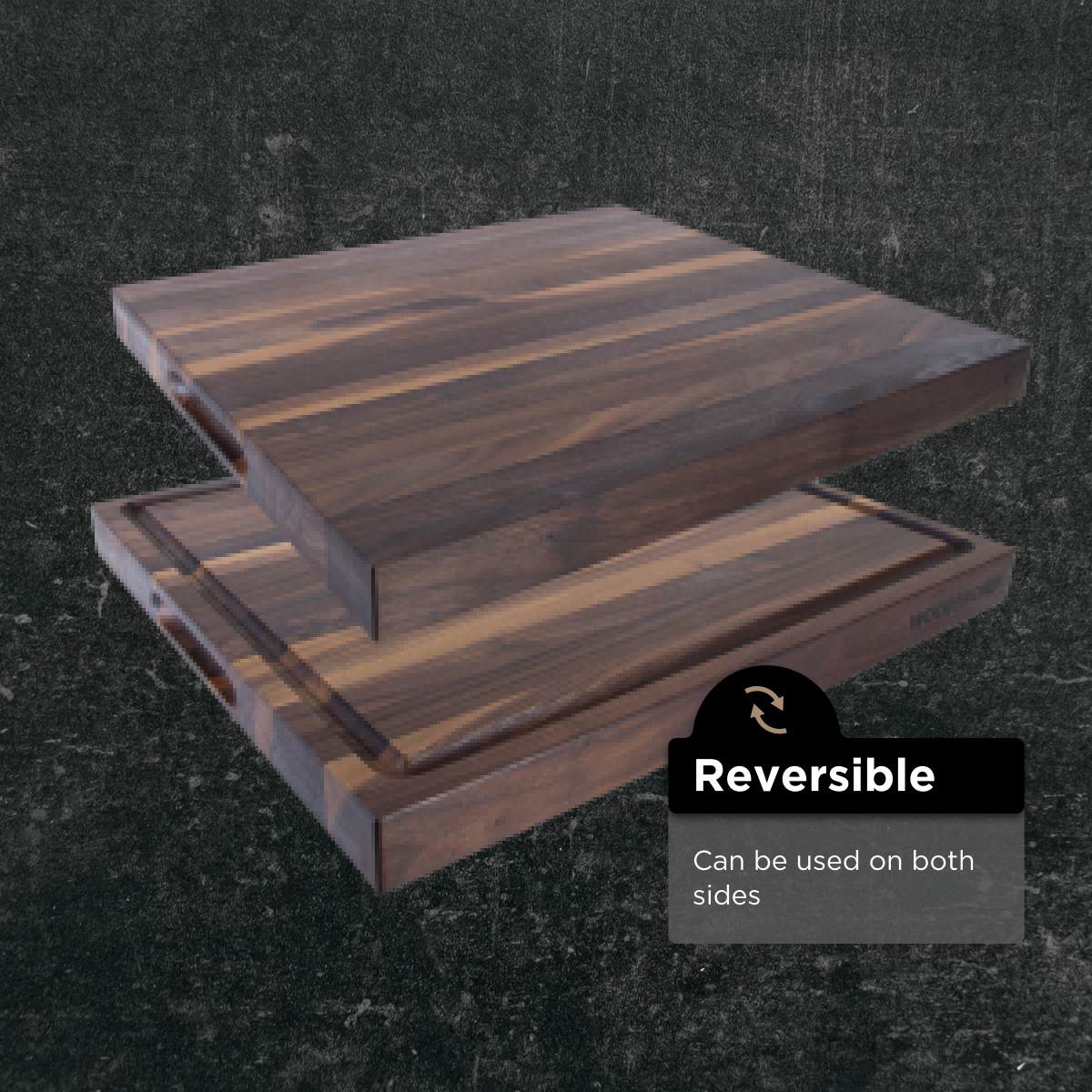
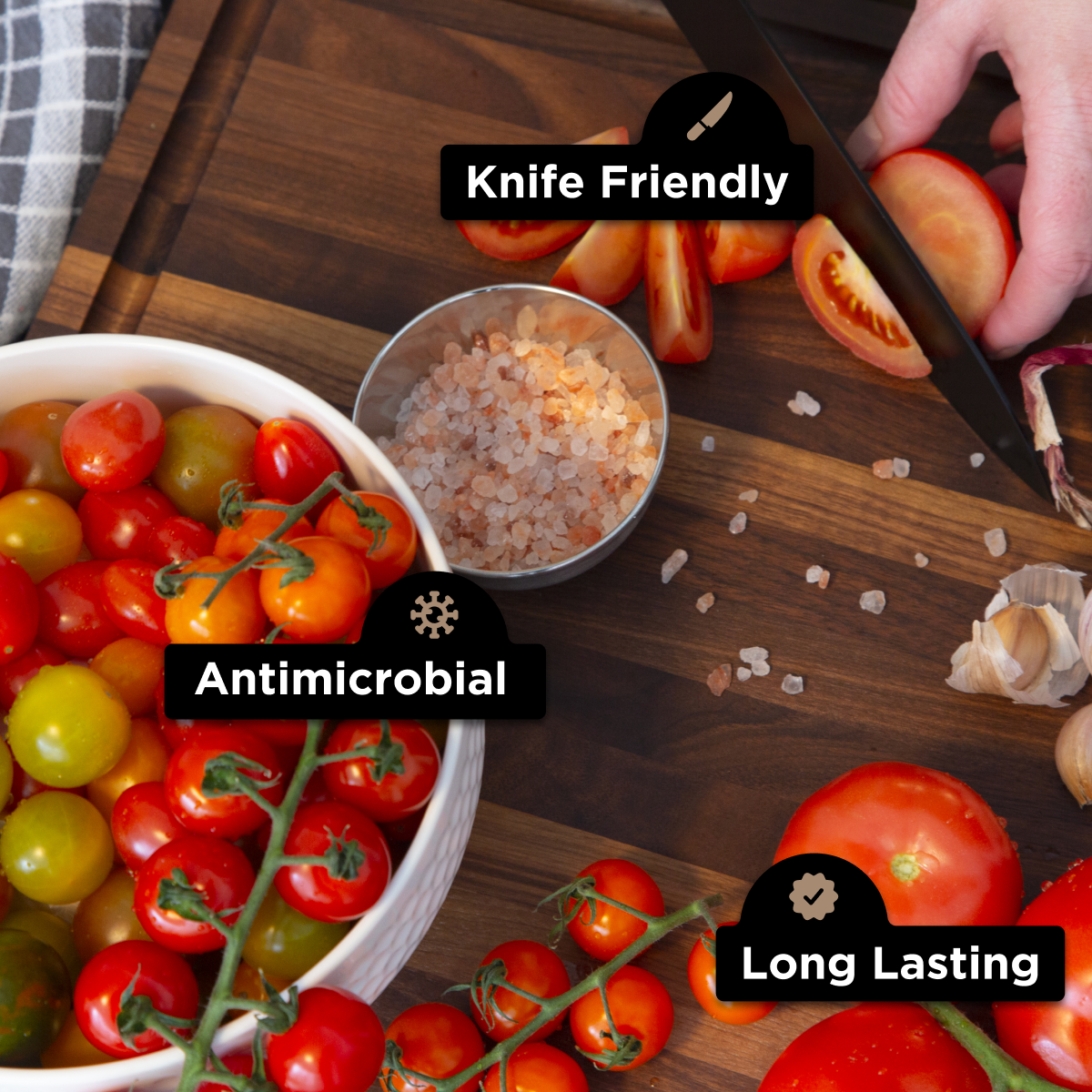
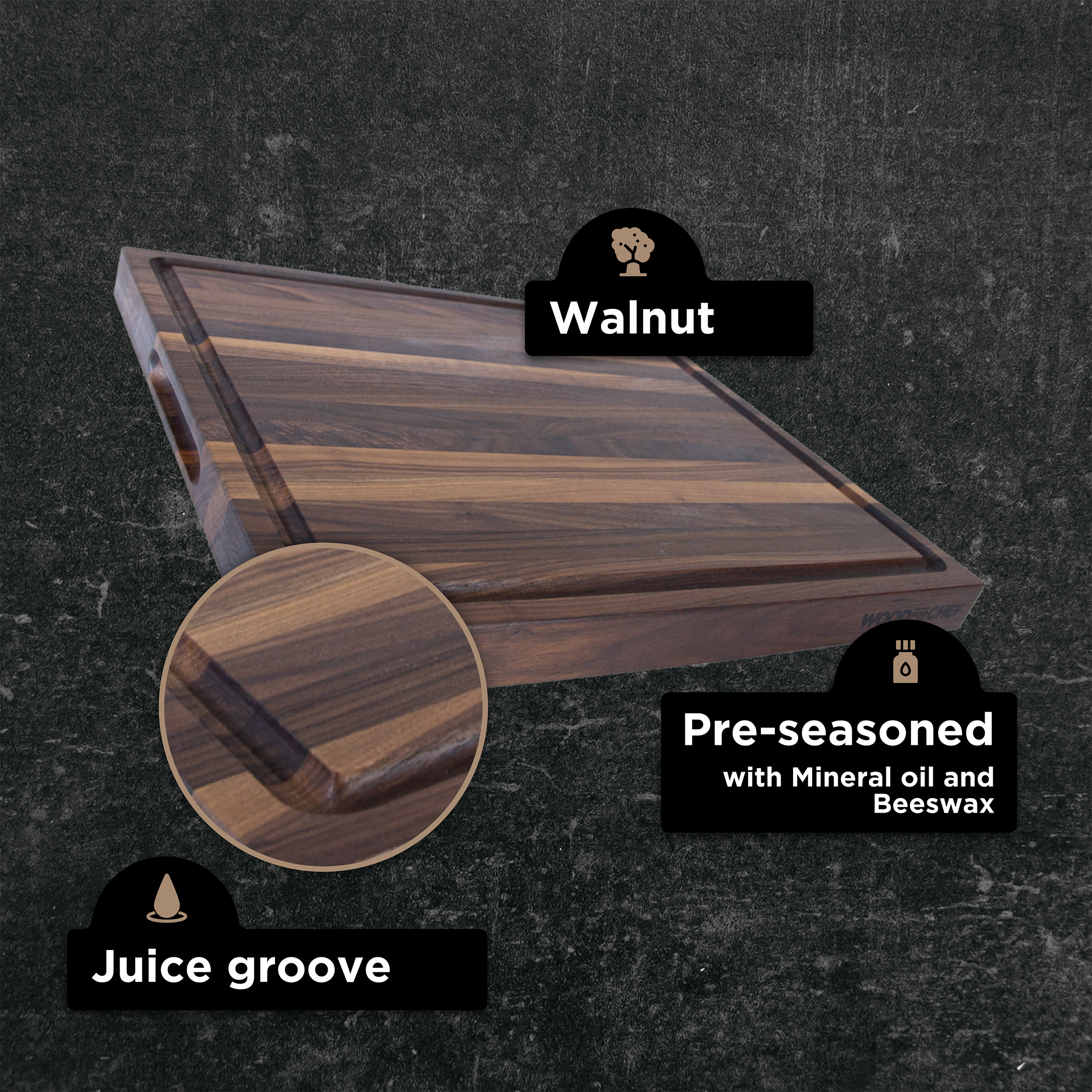
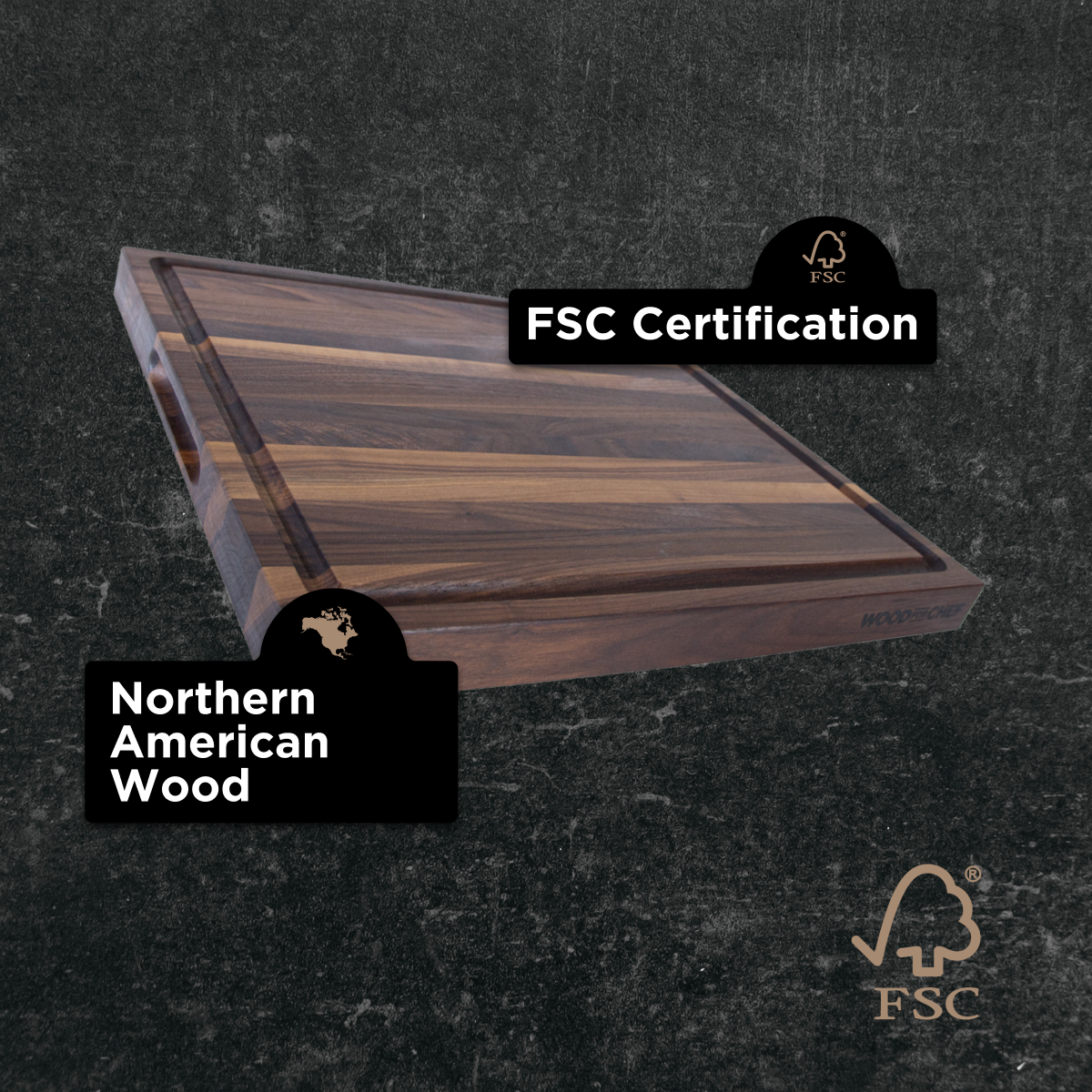
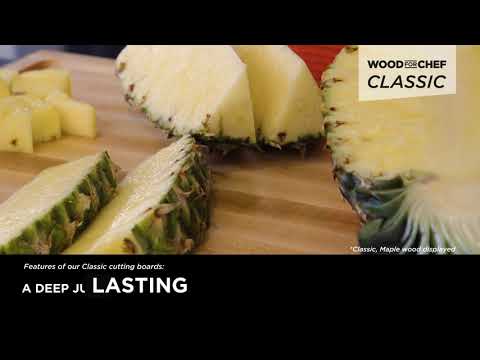
Medium Cutting Board
$74.95
Cons of wood cutting boards
While wood boards offer many advantages, there are a few trade-offs:
- Maintenance: Honesty about wood cutting board maintenance is essential for making an informed decision. Wood boards require more care than plastic alternatives—they need regular oiling, cannot go in the dishwasher, and require proper drying to prevent warping or cracking. However, this maintenance is neither difficult nor time-consuming.
- Weight: Wooden cutting boards can be heavy and less portable than plastic.
- Cost: A high-quality wooden board is often more expensive up front, though it typically lasts much longer.
Why people still use plastic cutting boards
Plastic cutting boards have earned a place in many kitchens, particularly for quick prep tasks and here’s why:
1.Easy to clean and replace
The primary selling point of plastic cutting boards has always been ease of cleaning. These boards can withstand dishwasher cycles, bleach solutions, and aggressive scrubbing without immediate visible damage.
2.Economic accessibility
The lower initial cost of plastic cutting boards makes them accessible to budget-conscious consumers. A basic plastic board costs a fraction of a quality wooden board, allowing new cooks to equip their kitchens without significant investment.
This affordability extends to replacement cycles. When plastic boards become heavily scarred or discolored, replacing them costs relatively little compared to the investment in a premium wooden board.
3.Lightweight and practical
Plastic boards offer undeniable practical advantages in certain situations. They're lightweight, making them easy to move and store. Multiple thin boards can be stacked efficiently, and their non-porous surfaces won't absorb flavors or odors from strongly aromatic ingredients. They’re often color-coded, which is helpful for separating food groups (e.g., meat vs. vegetables).
The Hidden costs of plastic cutting boards
Despite apparent advantages, plastic cutting boards carry hidden costs that become apparent over time.
- Bacteria in scratches:The most significant issue is surface degradation. Every knife cut creates microscopic scratches that gradually deepen into grooves and crevices. These damaged areas become increasingly difficult to clean effectively, eventually harboring bacteria despite thorough washing attempts.
- Knife damage: Plastic is harder than it seems. Over time, it can dull your knives faster than wood.The resulting need for frequent knife sharpening not only increases maintenance costs but can actually shorten blade lifespan through repeated material removal.
- Environmental Impact: The environmental cost of plastic cutting boards extends beyond their production. Made from petroleum-based materials, these boards require significant energy and resources to manufacture. The replacement cycle compounds this issue. While a wooden board might last decades, plastic boards typically require replacement more frequently multiplying their environmental footprint over time.
Key factors to consider before choosing a cutting board
Making the right cutting board decision requires weighing several critical factors that will impact your daily cooking experience. Consider these essential elements to find the perfect match for your kitchen needs and cooking style.
1.Food safety and hygiene standards
Food safety is essential. Both wood and plastic boards can be safe if maintained properly—but they work differently.
- Wood boards contain natural antimicrobial compounds that kill bacteria over time, even between uses.
- Plastic boards depend on thorough cleaning. They’re safe when new, but scratches from knife use can trap bacteria, making them harder to sanitize and eventually requiring replacement.
2.Knife longevity
If you care about your knives, wood is your friend. Plastic boards wear blades down faster, especially cheaper ones.
3.Maintenance
Wood boards need hand washing, thorough drying, and oiling to prevent cracking—but they can last for a very long time making your investment worth it.
Plastic boards are dishwasher-safe and low-maintenance but degrade quickly with knife use and need replacing regularly..
4.Aesthetic and lifestyle preferences
Wood boards add warmth, beauty, and can double as serving trays, fitting into both modern and rustic kitchens.
Plastic boards suit minimalist spaces with their uniform look and color options, ideal for those who value function over form.
Conclusion
The best choice you can make is wood. While plastic cutting boards have their uses, a wooden board offers durability, protects your knives, and looks great on any table. It’s more than just a prep surface, it becomes part of your kitchen routine and the memories you make around food.
